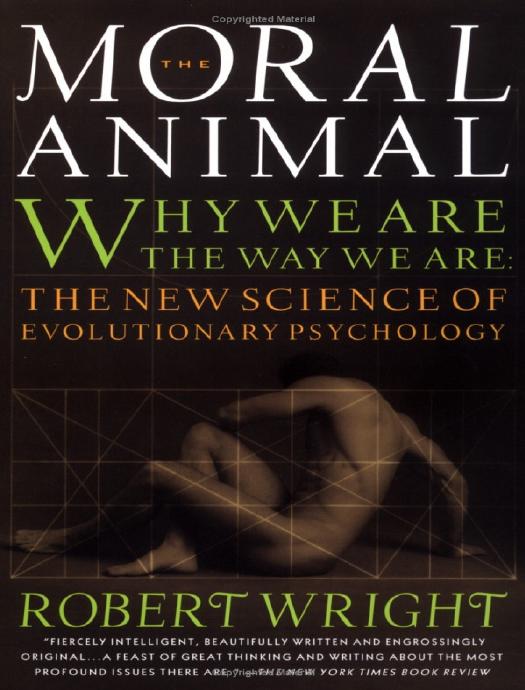The Moral Animal: Why We Are, the Way We Are: The New Science of Evolutionary Psychology by Robert Wright

Author:Robert Wright [Wright, Robert]
Language: eng
Format: epub, mobi, pdf
Publisher: Vintage
Published: 2010-12-28T14:10:30.281000+00:00
* * *
HOW TIT FOR TAT FEELS
TIT FOR TAT's strategy — do unto others as they've done unto you — gives it much in common with the average human being. Yet it has no human foresight. It doesn't understand the value of reciprocation. It just reciprocates. In that sense it is perhaps more like Australopithecus, our small-brained forebears.
What feelings would natural selection have instilled in an australopithecine to make it employ the clever strategy of reciprocal {197} altruism in spite of its dim-wittedness? The answer goes beyond the simple, indiscriminate "sympathy" that Darwin stressed. True, this kind of sympathy would come in handy at first, prompting TIT FOR TAT's initial overture of goodwill. But thereafter sympathy should be dished out selectively, and supplemented by other feelings. TIT FOR TAT's reliable return of favors might emerge from a sense of gratitude and obligation. The tendency to cut off largesse for mean australopithecines could be realized via anger and dislike. And the tendency to be nice toward erstwhile meanies who have mended their ways would come from a sense of forgiveness — an eraser of suddenly counterproductive hostility. All of these feelings are found in all human cultures.
In real life, cooperation isn't a matter of black and white. You don't run into an acquaintance, try to extract useful information, and either fail or succeed. More often, the two of you swap miscellaneous data, each providing something of possible use to the other, and the contributions don't exactly balance. So the human rules for reciprocal altruism are likely to be a bit less binary than TIT FOR TAT's. If person F has been distinctly nice on several occasions, you might lower your guard and do favors without constantly monitoring F, remaining alert only to gross signs of incipient meanness, and periodically reviewing — consciously or unconsciously — the cumulative account. Similarly, if person E has been mean for months, it's probably best to write him off. The sensations that would encourage you to behave in these time-and-energy-saving fashions are, respectively, affection and trust (which entail'the concept of "friend"); and hostility and mistrust (along with the concept of "enemy").
Friendship, affection, trust — these are the things that, long before people signed contracts, long before they wrote down laws, held human societies together. Even today, these forces are one reason human societies vastly surpass ant colonies in size and complexity even though the degree of kinship among cooperatively interacting people is usually near zero. As you watch the kind but stern TIT FOR TAT spread through the population, you are seeing how the human species's uniquely subtle social cement could grow out of fortuitous genetic mutations.
More remarkable, perhaps, is that the fortuitous mutations thrive {198} without "group selection." That was Williams's whole point back in 1966: altruism toward nonkin, though a critical ingredient in group cohesion, needn't have been created for the "good of the tribe," much less the "good of the species." It seems to have emerged from simple, day-to-day competition among individuals. Williams
Download
The Moral Animal: Why We Are, the Way We Are: The New Science of Evolutionary Psychology by Robert Wright.mobi
The Moral Animal: Why We Are, the Way We Are: The New Science of Evolutionary Psychology by Robert Wright.pdf
This site does not store any files on its server. We only index and link to content provided by other sites. Please contact the content providers to delete copyright contents if any and email us, we'll remove relevant links or contents immediately.
The Art of Thinking Clearly by Rolf Dobelli(8878)
Mindhunter: Inside the FBI's Elite Serial Crime Unit by John E. Douglas & Mark Olshaker(7856)
Change Your Questions, Change Your Life by Marilee Adams(6670)
Nudge - Improving Decisions about Health, Wealth, and Happiness by Thaler Sunstein(6648)
Mastermind: How to Think Like Sherlock Holmes by Maria Konnikova(6261)
The Power of Now: A Guide to Spiritual Enlightenment by Eckhart Tolle(4780)
Men In Love by Nancy Friday(4351)
Factfulness: Ten Reasons We're Wrong About the World – and Why Things Are Better Than You Think by Hans Rosling(4035)
The Confidence Code by Katty Kay(3580)
Thinking in Bets by Annie Duke(3544)
Man and His Symbols by Carl Gustav Jung(3334)
The Worm at the Core by Sheldon Solomon(2935)
Three Women by Lisa Taddeo(2927)
Why Buddhism is True by Robert Wright(2840)
Liar's Poker by Michael Lewis(2823)
The Inner Life of Animals by Peter Wohlleben(2779)
Descartes' Error by Antonio Damasio(2750)
The Power of Mindful Learning by Ellen J. Langer(2720)
The Slow Fix: Solve Problems, Work Smarter, and Live Better In a World Addicted to Speed by Carl Honore(2581)
